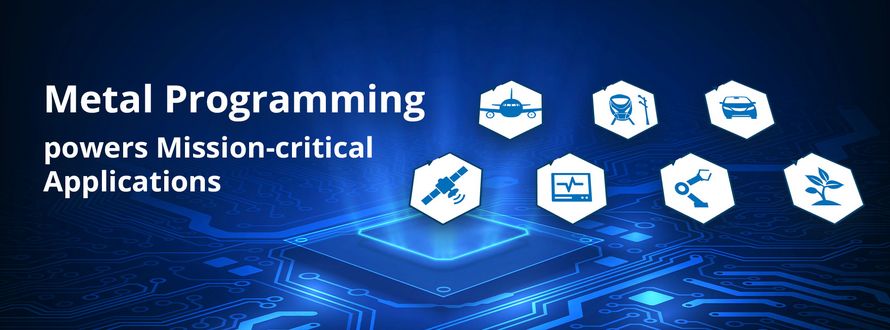In the world of embedded systems, engineers and developers frequently encounter the term bare metal programming, particularly in the context of mission-critical applications. This approach, which involves writing software that runs directly on hardware without an intermediary operating system, is known for its high performance, low latency, and deterministic behavior. However, as systems become increasingly complex, SYSGO offers innovative solutions to bridge the gap between bare metal efficiency and modern software capabilities.
What is Bare Metal Programming?
Bare metal programming refers to developing applications that run without an operating system (OS). This means the software has direct access to hardware resources like memory, I/O, and processor registers. Traditionally, this approach is used in real-time and safety-critical systems, such as avionics, automotive control units, and industrial automation, where minimal latency and absolute predictability are required.
In a bare metal system, software execution is typically managed using a super-loop architecture (a continuous loop checking for tasks to perform) or via interrupt-driven execution, where external or internal hardware events dictate program flow. This enables efficient, real-time responses, making bare metal programming an optimal choice for low-power, high-reliability environments.
Challenges of Bare Metal Programming
While bare metal programming provides optimal control over system resources, it also presents significant engineering challenges, especially as the complexity of applications increases:
- Scalability Issues: As systems grow, handling hardware interactions at a low level becomes cumbersome and error-prone
- Lack of Multitasking: Without an OS, running multiple tasks in parallel requires complex, manual implementation
- High Development Effort: Engineers must write drivers, schedulers, and memory management routines from scratch
- Limited Security and Safety Mechanisms: No built-in features for memory protection or process isolation
SYSGO's Approach: PikeOS and ELinOS
To overcome these limitations, SYSGO offers solutions that combine the advantages of bare metal programming with the flexibility of modern software platforms. Their flagship products, PikeOS and ELinOS, provide a structured, safety-certified alternative to traditional bare metal development.
PikeOS: Hard Real-Time OS with Hypervisor Capabilities
SYSGO’s PikeOS is a certifiable real-time operating system (RTOS) and hypervisor designed for high-performance and safety- and security-critical applications. Unlike bare metal programming, PikeOS offers:
- Partitioned Execution: Critical tasks run in isolated partitions, ensuring software failures do not affect the entire system
- Real-Time Performance: Provides deterministic execution similar to bare metal but with the added benefits of OS management
- Multi-Core Support: Works with both AMP (Asymmetric Multiprocessing) and SMP (Symmetric Multiprocessing) architectures
- Safety & Security Compliance: Certified to industry standards like DO-178C (avionics), ISO 26262 (automotive), IEC 61508 (industrial automation), and EN 50128 (railway systems)
By leveraging PikeOS, engineers can retain the speed and efficiency of bare metal programming while integrating safety, security, and scalability features that modern applications demand.
ELinOS: Industrial-Grade Embedded Linux
For developers who need the flexibility of Linux but still require real-time performance, ELinOS serves as an industrial-grade embedded Linux distribution. It can run as a guest OS on PikeOS, allowing engineers to develop feature-rich applications while still meeting real-time constraints. ELinOS offers:
- Pre-built toolchains and BSPs (Board Support Packages)
- Seamless integration with PikeOS for mixed-criticality environments
- Support for security-hardening features like SELinux and TPM
This hybrid approach is particularly useful for automotive, aerospace, and industrial automation, where real-time control and high-level application functionality must coexist.
Why Engineers are moving beyond traditional Bare Metal
While bare metal programming remains essential for some low-power and highly deterministic systems, many engineers are transitioning to modern RTOS and hypervisor solutions. The reasons include:
- Faster Development Cycles: With PikeOS and ELinOS, developers reuse existing software components rather than building everything from scratch
- Improved Security and Reliability: Built-in memory protection, separation kernels, and certified safety measures reduce system failures
- Support for Multi-Core and Mixed-Criticality Systems: Newer processors require advanced scheduling techniques beyond what traditional bare metal can provide
- Easier Maintenance and Updates: RTOS-based solutions like PikeOS support over-the-air updates and remote patching, which are challenging in bare metal systems
The Future of Mission-critical Software Development
Bare metal programming has played a crucial role in embedded systems for decades, providing developers with fine-grained control over hardware. However, as embedded applications become more complex and demand greater reliability, security, and scalability, engineers are increasingly turning to solutions like SYSGO’s PikeOS and ELinOS.
By combining the best aspects of bare metal programming with modern RTOS and hypervisor capabilities, SYSGO empowers developers to build next-generation mission-critical applications—without sacrificing performance or safety.
For those looking to optimize their embedded systems, the future lies not in abandoning bare metal programming but in augmenting it with intelligent, scalable solutions.
ELinOS Test Version
A free ELinOS test version is available for download at www.sysgo.com/get-elinos

